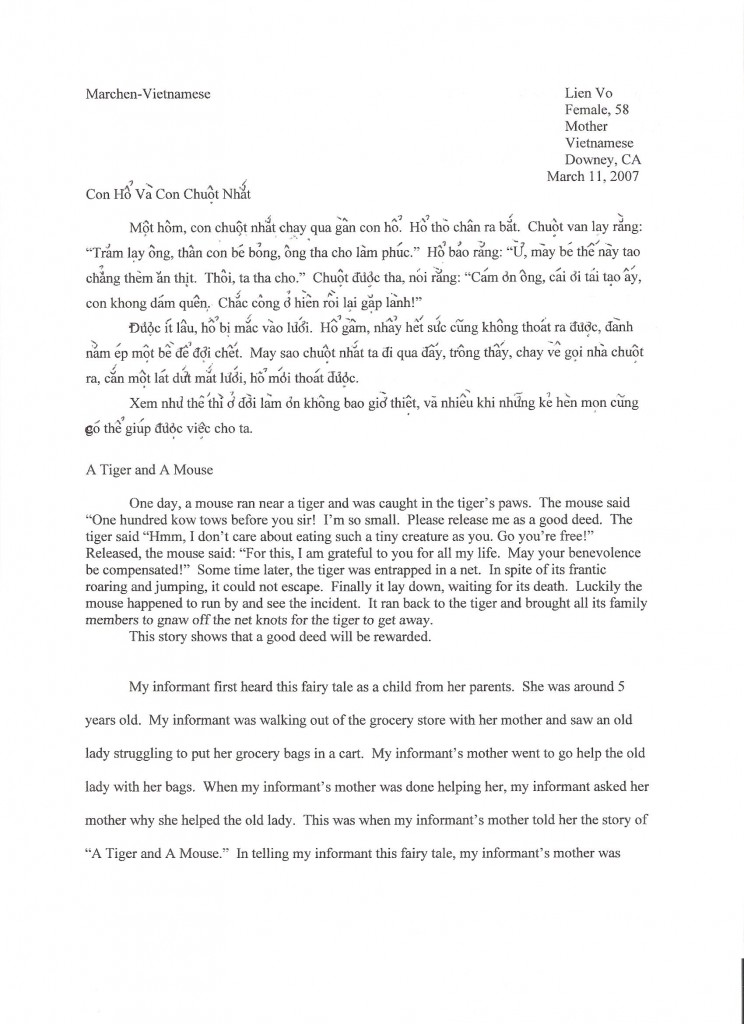trying to teach my informant that if a person does good deeds, then in the end that person will be rewarded. My informants mother was also trying to teach my informant that if a person does not do any good deeds, then no good things will happen in that persons life.
Another way this lesson is used is through a proverb. The proverb that has the same teaching of this fairy tale is What comes around, goes around. This proverb means that if a person does something good, then good things will come to that person. However, if a person does bad things, then bad things will happen to that person.
Another variation of this story is known to the American culture. However, instead of the story having a tiger, the known American version has a lion. This story was published in Aesops Fables as The Lion and the Mouse. In the fable of The Lion and the Mouse, the lion was going to eat the mouse but instead let the mouse go. When the lion gets captured in net made of ropes, the mouse comes back and helps save the lion from being captured. As one can see, there are variations of this story that are being told to teach the lesson of good things will come to those who do good things. Even though in the Vietnamese version, there is a tiger and in the American version there is a lion, the concept of the fairy tale is still the same.
Annotation: The Lion and the Mouse in Aesops Fables. March 26, 1484. William Caxton printed the first version of Aesops Fables in English.

